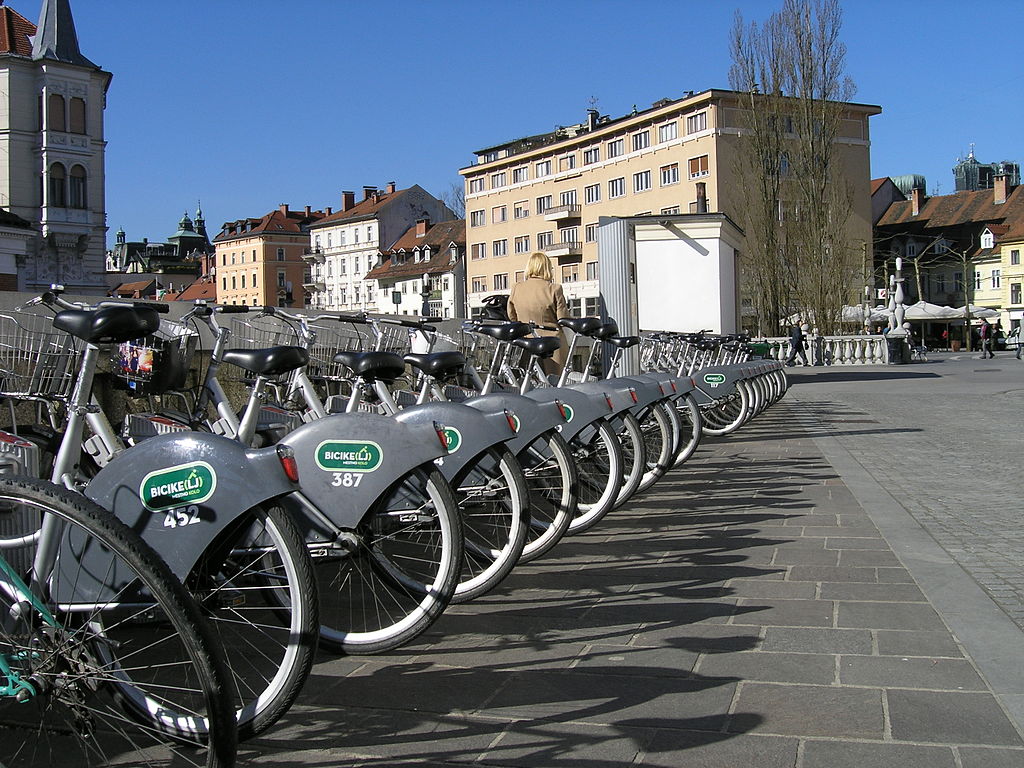A bicycle-sharing system is a service in which bicycles are made available for shared use to individuals on a very short-term basis. Bike sharing is often named in different ways according to the geographical area of application, e.g. ‘cycle hire’ in the UK, ‘public bicycle’ in China and ‘bicycle sharing’ in North America. Bike share schemes allow people to borrow a bike from point “A” and return it at point “B”. Bike sharing schemes (BSSs) have existed for almost fifty years but only in the last decade have they significantly grown in prevalence and popularity to include over 800 cities across the world and a global fleet exceeding 900,000 bicycles. While predominantly enabling a commuting function, bike sharing allows users to undertake other key economic, social, and recreational activities. According to policy documents and various academic literatures, BSSs are expected to contribute to society in a number of ways, including:
- To increase cycling levels, and help normalize and promote cycling;
- To improve accessibility and support flexible mobility;
- To reduce single occupancy car journeys and ease traffic congestion;
- To improve road safety, in particular for cyclists;
- To reduce CO2 emissions and to improve air quality by reducing other pollutant emissions from motorized traffic;
- To improve public health and increase levels of physical activity;
Now I will break down the reality of these expectations in several categories.
- Determinants of and Barriers to Bike Sharing Use
According to user surveys conducted in different cities and countries, bike sharing can improve the experience, accessibility and affordability of personal travel, through greater transport choice, reduced journey times and reduced mobility costs. In short, the evidence I found suggests that “convenience” consistently emerges as the key motivating factor for bike sharing use.
- Broader Changes in Users’ Travel Behaviors/Transport Mode Substitution
A recent survey of active users of the London BSS showed that 78% started to cycle or cycled more as a result of the scheme. Most BSS users surveyed in 2011-2012 in four North American cities reported an increase in their cycling levels (72% cycling more, 22% the same, 5% less) as a result of bike sharing. Considering changes in car driving, the available evidence suggests that bike sharing can reduce car use. In 2014, a study found that the share of respondents who reported driving less as a result of bike sharing ranged from 29% in Montreal and 35% in Toronto to over 50% in Mexico City, Minneapolis-Saint Paul, and Salt Lake City.
- Impacts on Attitudes to Cyclists
The study of Dublinbikes, a BSS company, reported that bike sharing can contribute towards raising awareness and acceptance of cyclists, and increasing road safety for cyclists. Over 80% of survey respondents were also car drivers. Of these, 93.8% said that using the Dublinbikes scheme had raised their awareness of cyclists on the road while driving. A study released by Fishman, in 2012, found that BSS users in Brisbane perceived better behavior from motorists when riding the shared bikes than when cycling with their own bikes.
- Environmental Impacts
Many commentators and publications supportive of bike sharing provide estimates of the CO2 emission savings resulting from bike share use to suggest positive environmental impacts. The significance of these results is questionable because such estimates are not normally substantiated with robust evidence from usage data and/or user surveys, but rest on the invalid assumption that all bike sharing journeys substitute for car journeys. However, it’s common sense that BSS’ are helping the environment since bicycles don’t emit C02, we just don’t know extent of their positive impact.
- Health Impacts
A before and after study of BIXI, a BSS based in Montreal, found increased cycling levels among those who lived in proximity of docking stations, suggesting that BSSs can lead to increased cycling thus indirectly promoting public health. However, this study does not indicate whether, and to what extent, the increase in cycling levels is accompanied by a decrease in other forms of physical activity, such as walking, as a result of bike share use.
Overall, the evidence on the impacts, and especially on the benefits, of bike sharing is growing but is still limited in terms of the range of case studies available, the methods used, the data collected and/or generated, and the range of characteristics and impacts. Further research is needed to allow for a better analysis of schemes and to increase the credibility of the results.
